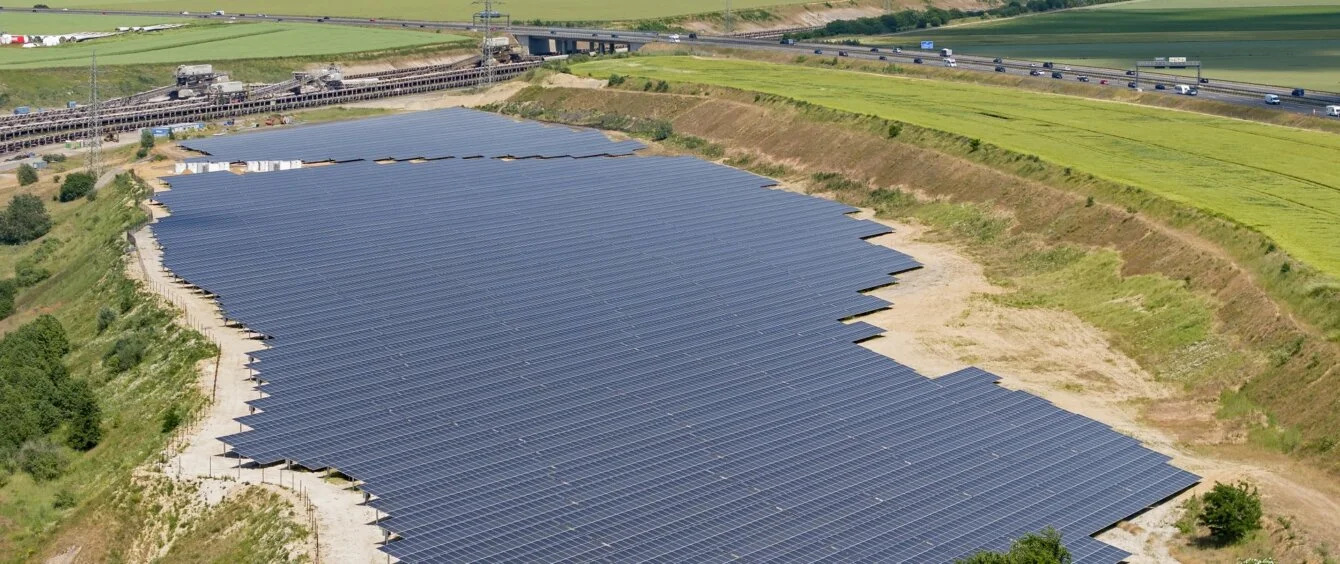According to the German Network Agency, solar power already accounted for 11.4 percent of Germany’s electricity consumption (Link in German) in 2022, with nearly 7.4 gigawatts of generation capacity additions going online for the first time. What’s more, the potential of this increasingly affordable and efficient technology does not appear to be exhausted. Based on an extensive study by British think tank Aurora Energy Research, Germany is the most attractive solar market in the European Union including Great Britain.
Aurora’s Market Attractiveness Ranking puts Germany clearly ahead of last year’s leader Spain, with a score of 8.0 versus 6.9. This assessment is backed by nine criteria, including the state of solar energy expansion in 2022, addition targets through 2030, and planned capacity auctions. Germany’s leapfrogging the old front-runner was primarily due to current developments and further prospects on the domestic market.
Over 20 percent of European investment
A key factor are the ambitious political goals of the government to establish Germany as a leading European solar market. The country’s administration aims to increase installed solar capacity to 215 gigawatts and invest up to 40 billion euros in new assets by 2030. Total European investment is projected to come in at 150 billion euros, giving Germany a share of more than a fifth.
As the experts are uncertain whether the goal will be achieved, they have penned several scenarios. One of the possible outcomes has been dubbed “Central,” in which installed capacity is forecast to total 159 gigawatts. In this case, Germany would still remain Europe’s biggest solar market, followed by Italy.
Germany has pioneered solar energy once before, back in the 2000s, when the technology was vastly more expensive. During that era, most of the solar assets installed the world over were in Germany. This development has regained momentum in recent years.
Adding to its current market leadership, according to Aurora, Germany is also ahead of the pack in terms of declared expansion goals. The need for long-term power purchase agreements (PPAs) is projected to register significant growth, with demand in 2030 potentially exceeding supply 2.5 times over. This could make Germany the European market with the second-largest shortage behind France.
Politics as driver
Alongside Germany, the report highlights Poland and France as nations with “strong political support” for the expansion of PV assets – especially with regard to invitations to tender. The rise in the top bids in PV auctions is considered a clear signal for the market. Conversely, support is deemed to be merely “moderate” in Great Britain, where solar energy competes with highly subsidised wind power.
As regards grid access, Germany still fares fairly well compared to other countries, despite the challenges it faces. Other nations such as Great Britain, where long waiting periods delay expansion by up to ten years, Poland, where a marked increase in grid connection denials is blocking progress, and Portugal, where grid connections are only offered to auctioned projects, have bigger Problems. According to Aurora, the highest hurdle in Germany is land availability. Approval procedures are also considered to be lacklustre. However, this situation prevails not in Germany alone, as only Denmark, Sweden and Finland are rated better on this point.
Solar energy increasingly worthwhile
Profitability of solar projects was another focal point of the analysis. Experts anticipate investment costs of solar assets dropping from approximately 700 euros per kilowatt hour at present to about 550 euros by 2030 and roughly 400 euros by 2050. Based on the report, Germany benefits from a relatively low cost of capital, contrasted by less sunlight than other countries.
Based on Aurora’s calculations, a large-scale project in Germany could produce electricity at an average cost of 55 to 60 euros per megawatt hour (MWh) in 2030. This would place Germany midfield in Europe, between the Nordic nations’ production costs of 65 to 73 euros and the approximately 30 euros per MWh in Spain and Portugal. The cost forecast for Italy, France and Poland is between 40 and 55 euros.
Photo credit: © RWE AG
